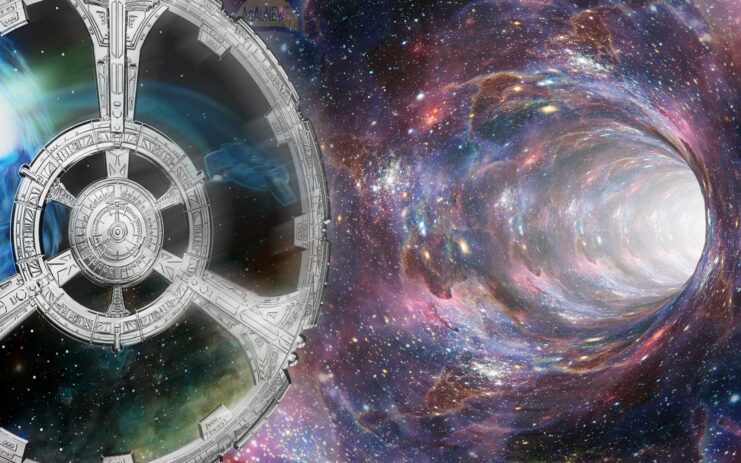25 years on to the day from its first US broadcast date, James Cooray Smith returns to the Wormhole to reassess Star Trek: Deep Space Nine. This week, the crew goes uncover as Klingons in ‘Trials and Tribble-ations’.
The production of ‘Unification’, in the autumn of 1991, had set something of a precedent for Star Trek as a franchise: That significant anniversary of the original 60s Star Trek should be marked with celebratory episodes of its television spin-offs. So, when Star Trek’s 30th anniversary rolled around five years later, the production teams of both Voyager and Deep Space Nine were prompted by Paramount to do exactly that. This resulted in George Takei’s guest appearance as Captain Sulu in an episode of the former, and something far stranger in the latter.
DS9’s showrunner Ira Steven Behr and his staff were always looking for an unorthodox way to interpret their brief. An early idea was for the Defiant to visit Sigma Iotia 2, the planet seen in the classic TOS comedy ‘A Piece of the Action’. It had been established in that episode that the Iotians were innately imitative; which is how they had come to create an entire society out of the abandoned book ‘Chicago Mobs of the 1920s’. The punchline of ‘A Piece of the Action’ had seen Dr McCoy realise he’d left his communicator on the planet, suggesting that from now on the Iotians would now base their culture around, in effect, the iconography of Star Trek.
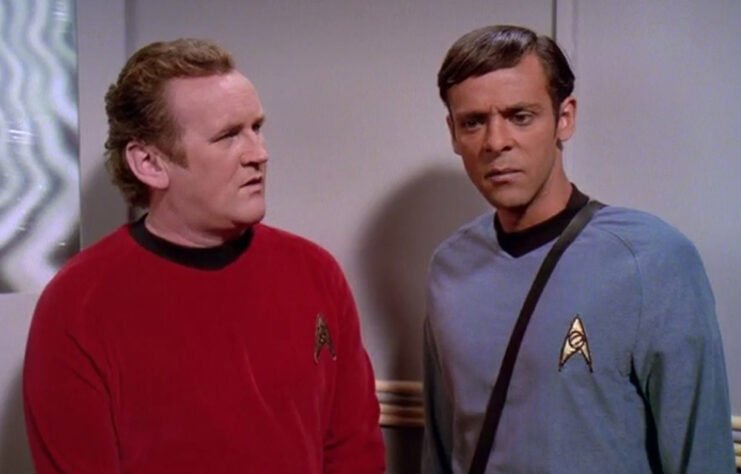
This idea was pushed for by Ronald D Moore, the biggest Star Trek fan on DS9’s staff. Moore also ended up writing the teleplay for the idea which was eventually picked up instead of his own. Some of Star Trek’s visual and special effects staff were keen to explore technology developed for the Oscar-winning film Forrest Gump, which had allowed newly shot footage of Tom Hanks’ titular savant to be integrated into decades-old footage. Another touchstone was Back to the Future Part II (1990), in which the lead characters went back in time to the events of the first film in the series and searched for a McGuffin while avoiding disrupting the history – and story – shown in the earlier film.
What if Forrest Gump-style tech could be used to make a DS9 episode that worked something like Back to the Future Part II? Tests showed the effects crew could handle, in theory, inserting the DS9 cast into an episode of 60s Star Trek. But which episode? ‘The Trouble With Tribbles’ topped a fairly small list. It was not only one of the most celebrated episodes of Star Trek, but also, with its lighter tone, one that could be revisited and intervened in a celebratory manner, without mocking it. Its relatively simple plot could also have that of a DS9 episode which would inevitably be nearly ten minutes shorter than it, wrap around it without it becoming incomprehensible.
There was a relatively easy way of linking together the two strands of the episode, the story in DS9’s present and the trip to Kirk’s era. DS9 had established that Klingons, like Vulcans, lived for a century or so longer than humans do, when three Klingons who had appeared in The Original Series guested in the second season DS9 episode ‘Blood Oath’, and were played by the same actors. The Klingon villain of ‘The Trouble with Tribbles’, Arne Darvin, had been played by Charlie Brill.
A friend of Leonard Nimoy’s, and known in the 60s for his work on Rowan and Martin’s Laugh-In, Brill was by 1996 one of the stars of CBS/USA Network’s Silk Stalkings, and probably more recognizable on television than he had ever been. One day, Behr took his staff out for lunch at a local pizzeria, where they discussed the Tribble episode idea. At which point Behr suddenly spotted the actor standing at the counter in the same restaurant, buying himself a pizza. Behr took this coincidence to be auspicious and decided on the spot that ‘Trials and Tribble-ations’ was a go.
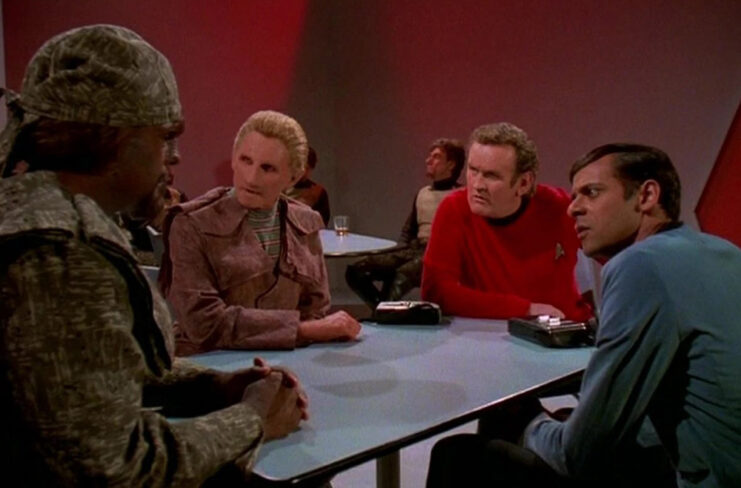
At its core, this episode is the same as the rejected ‘A Piece of the Action’ sequel; a chance to celebrate the aesthetic of the original Star Trek as much as its cast. “I love classic 23rd-century design,” says Dax, inspecting a tricorder while on the original Enterprise, and the whole production clearly loves it too. The ‘Forrest Gump technology is used sparingly and effectively; the DS9 crew appears in vision with their TOS predecessors in surprisingly few, but exceptionally well-chosen, shots.
Mostly the TOS era is recreated with partial set rebuilds, and imitation props and costumes. Robert Justman, co-producer of almost all of the original Star Trek, visited the set and found it all in order, except one panel. He was informed by production designer Herman Zimmerman that it had originally been made of a material that was no longer on sale for safety reasons.
This care, this loving tribute, results in an end of the first act ‘catch the breath’ moment as Sisko and Dax emerge on Kirk’s ship for the first time. The actors’ looks of amazement weren’t entirely performance. They had been deliberately kept away from the set, an enclosed one with walls and a ceiling that made it seem like a whole world until they saw it on camera. Their reactions, like the world of 2267, are suddenly very real.
When watching the episode on blu-ray or Netflix 25 years later this moment is immediately followed by an even better one; the second act opens with beautiful effects shot where the TOS Enterprise is seen from an angle often used on Star Trek: The Next Generation, but not possible on a 1960s television budget, as the camera zooms over the saucer towards the bridge. Yum. It’s a highlight of an episode that is almost all highlights. Dax and Sisko fanboying about the TOS characters in a way that resembles the way some people talk about the actors who played them. Bashir’s “I’m a Doctor, not a historian” outburst.
The recreation of the original episode’s bar fight and the ‘explanation’ for the differences between the 60s and 90s Klingon make-up is Worf looking at the table in embarrassment and muttering “We do not discuss it with outsiders”.
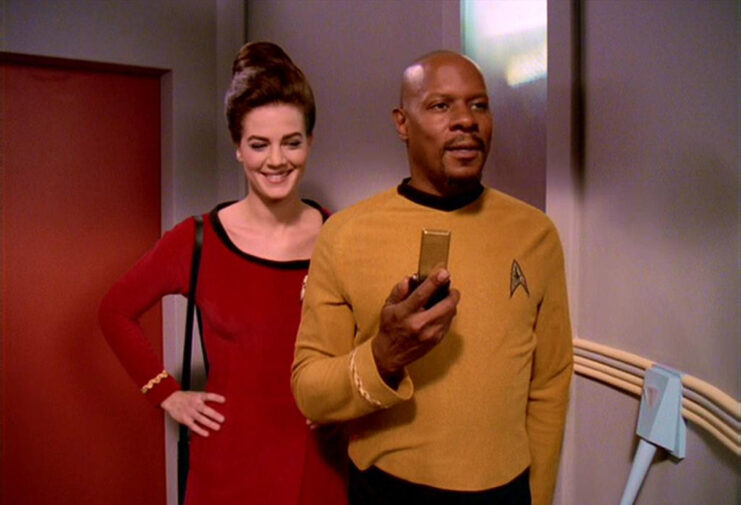
Discussing matters with outsiders, however, is exactly what Sisko is forced to do once the events of this episode are over. An efficient, time-saving framing sequence showing this opens and closes the episodes. This is set on DS9 and ensures that this does not join the long list of exceptionally good DS9 episodes to not really be set on the titular station. It suggests, as does the way the script sketches DS9’s lead characters for new viewers, that the production team knows this episode will draw an audience not all that familiar with the current versions of Star Trek.
It also features Dulmer and Lucsly, two anagrammatical Temporal Investigations agents interviewing Sisko about his recent trip to 2267. They too seem to partially exist to make sure that casual audience knows the DS9 staff are watching the #1 show on television. (Although in which context it seems appropriate to ask, why are they both men?) Nevertheless, the joke that they, seemingly alone in TNG-era Star Trek, hate Captain Kirk because his career makes their job difficult, justifies their presence – and sets up Darvin’s motivations for arranging the temporal incursion they’re there to investigate beautifully.
Moore pushed to end the episode with the TOS end theme, and an ersatz TOS end credits featuring photographs from other episodes of DS9, but the episode was already over budget, and his colleagues regarded the idea as indulgent. Which is an odd line to draw. The whole episode is a birthday cake, a pure and glorious indulgent confection, and it is all the better for it.
Go deep into DS9 with Star Trek: Deep Space Nine Illustrated Handbook.
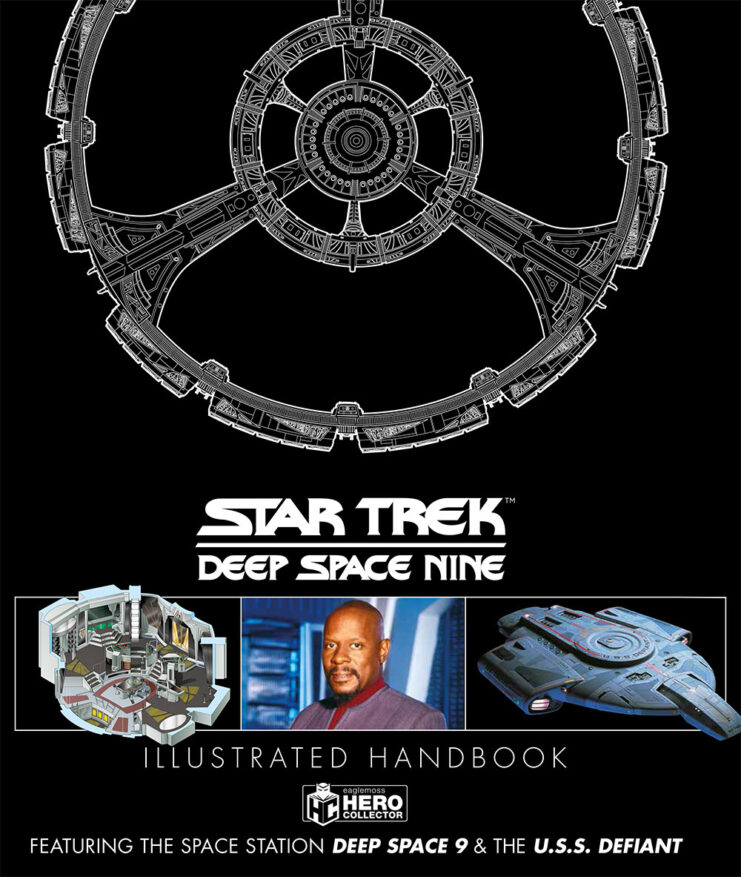
Exploring the former Cardassian space station in detail, this volume looks at Deep Space Nine’s history and operation under the command of Captain Benjamin Sisko of the United Federation of Planets. The chapters take an in-depth look at the station, the warship the U.S.S. Defiant, and the small, multi-purpose runabouts used as transport by the crew. With technical information from official sources, annotated exterior views and isometric illustrations of key locations, this handbook provides an extraordinary reference guide to 24th-century Federation life on the diplomatic outpost.

